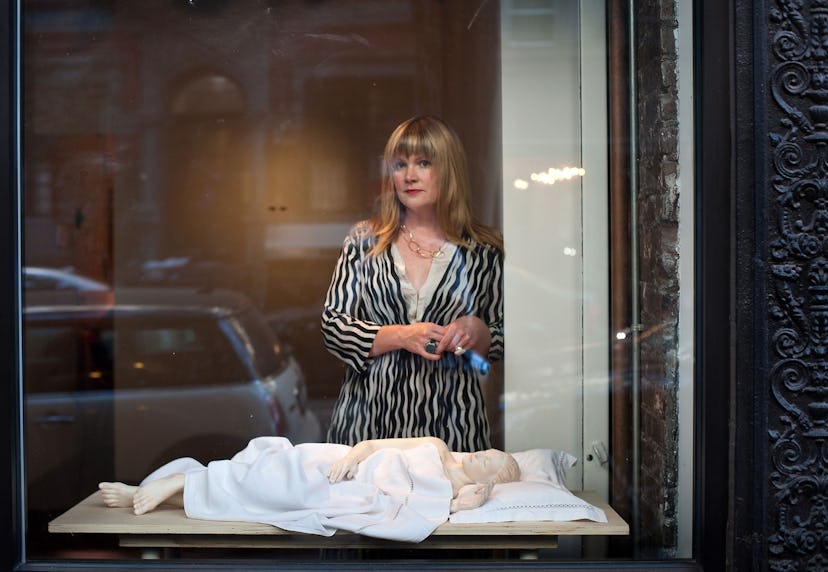Alison Gingeras: Guerrilla Gallerists
Meet three storefront curators who are gleefully subverting the white-cube mentality.

Last summer, the artists Alex Da Corte and Borna Sammak crammed a storefront in New York’s East Village with a maze of deli displays and a sculpture of a giant hoagie. Even in a neighborhood full of delis, “As Is Wet Hoagie,” as the show was called, managed to stand out. “It’s been fun,” says Alison Gingeras, who opened the mini exhibition space OKO last October in collaboration with Amalia Dayan, a partner in the upscale gallery Luxembourg & Dayan. “It’s nice the way people see art through the window on their way to the noodle shop down the street.”
Gingeras, who is 40 and the mother of two young children with the artist Piotr Uklanski, was a curator at the Guggenheim Museum, the Centre Pompidou, and the François Pinault Foundation. After corralling the latter’s vast private collection into two supershows—at the Palazzo Grassi and the Punta della Dogana in Venice in 2006 and 2009, respectively—she happily traded the slowly evolving world of institutional culture for the seat-of-the-pants operation she runs now. Oko means “eye” in Russian and Polish, languages still heard on the streets surrounding the gallery. “I’ve lived in the East Village for most of my adult life,” Gingeras says. “But it was revelatory to see how this tiny space could activate the neighborhood.”
When Hurricane Sandy knocked out the power during OKO’s inaugural show, the sculptor and performance artist Danny McDonald transformed the gallery into a karaoke club for local residents. Last February, Gingeras showed four early paintings by Julian Schnabel one at a time for two weeks each. This month, the buzzworthy Ella Kruglyanskaya’s aggressively painted “bathers” are shaking up OKO’s three walls. “My idea was for a place where you see something you never have before—or a rereading of something you wouldn’t expect or a strange juxtaposition,” Gingeras explains. Though she hasn’t abandoned the notion of returning to a museum, she says, “after having a second child, I needed to slow down. I used to work all the time. Now I have a life.”
Guerrilla Gallerists
“People are always trying to figure us out. They say, Wait, this is crazy. You design artist books, and you have a bookstore, but you also have a gallery. I don’t get it.” Read more about curator Brendan Dugan here.
The book he designed for the artist Carol Bove. Read more about curator Brendan Dugan here.
Courtesy of Karma.
“Milan is both bourgeois and avant-garde, but these two levels don’t speak so often. I’d like to create a space where they meet.” Read more about curator Caroline Corbetta here.
An installation at Il Crepaccio, 2012. Read more about curator Caroline Corbetta here.
Courtesy of Caroline Corbetta.
“I’ve lived in the East Village for most of my adult life. But it was revelatory to see how this tiny space could activate the neighborhood.” Read more about curator Alison Gingeras here.
Jerzy “Jurry” Zielinski’s Zaspokajanie, 1969, and Polski Akt Matzenstwa, 1974. Read more about curator Alison Gingeras here.
Courtesy of OKO.